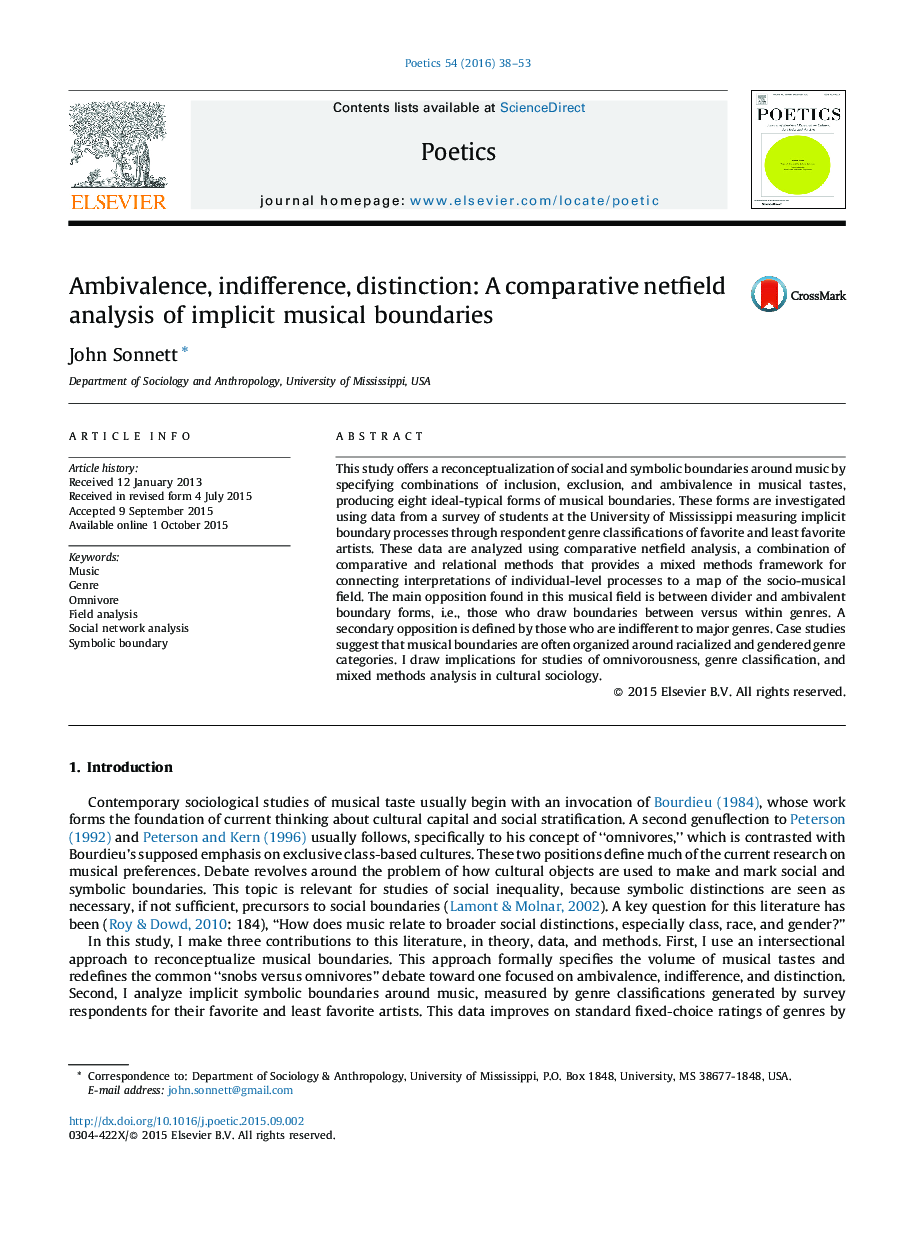| کد مقاله | کد نشریه | سال انتشار | مقاله انگلیسی | نسخه تمام متن |
|---|---|---|---|---|
| 1128248 | 1488765 | 2016 | 16 صفحه PDF | دانلود رایگان |
• Configurations of inclusion, exclusion, and ambivalence define musical boundary forms.
• Genre measured indirectly by respondent classifications of favorite and least favorite artists.
• Primary contrast in the musical field is drawing boundaries between versus within genres.
• Secondary contrast in the musical field defined by those who are indifferent to major genres.
• Comparative netfield analysis connects individual-level and field-level analysis.
This study offers a reconceptualization of social and symbolic boundaries around music by specifying combinations of inclusion, exclusion, and ambivalence in musical tastes, producing eight ideal-typical forms of musical boundaries. These forms are investigated using data from a survey of students at the University of Mississippi measuring implicit boundary processes through respondent genre classifications of favorite and least favorite artists. These data are analyzed using comparative netfield analysis, a combination of comparative and relational methods that provides a mixed methods framework for connecting interpretations of individual-level processes to a map of the socio-musical field. The main opposition found in this musical field is between divider and ambivalent boundary forms, i.e., those who draw boundaries between versus within genres. A secondary opposition is defined by those who are indifferent to major genres. Case studies suggest that musical boundaries are often organized around racialized and gendered genre categories. I draw implications for studies of omnivorousness, genre classification, and mixed methods analysis in cultural sociology.
Journal: Poetics - Volume 54, February 2016, Pages 38–53
